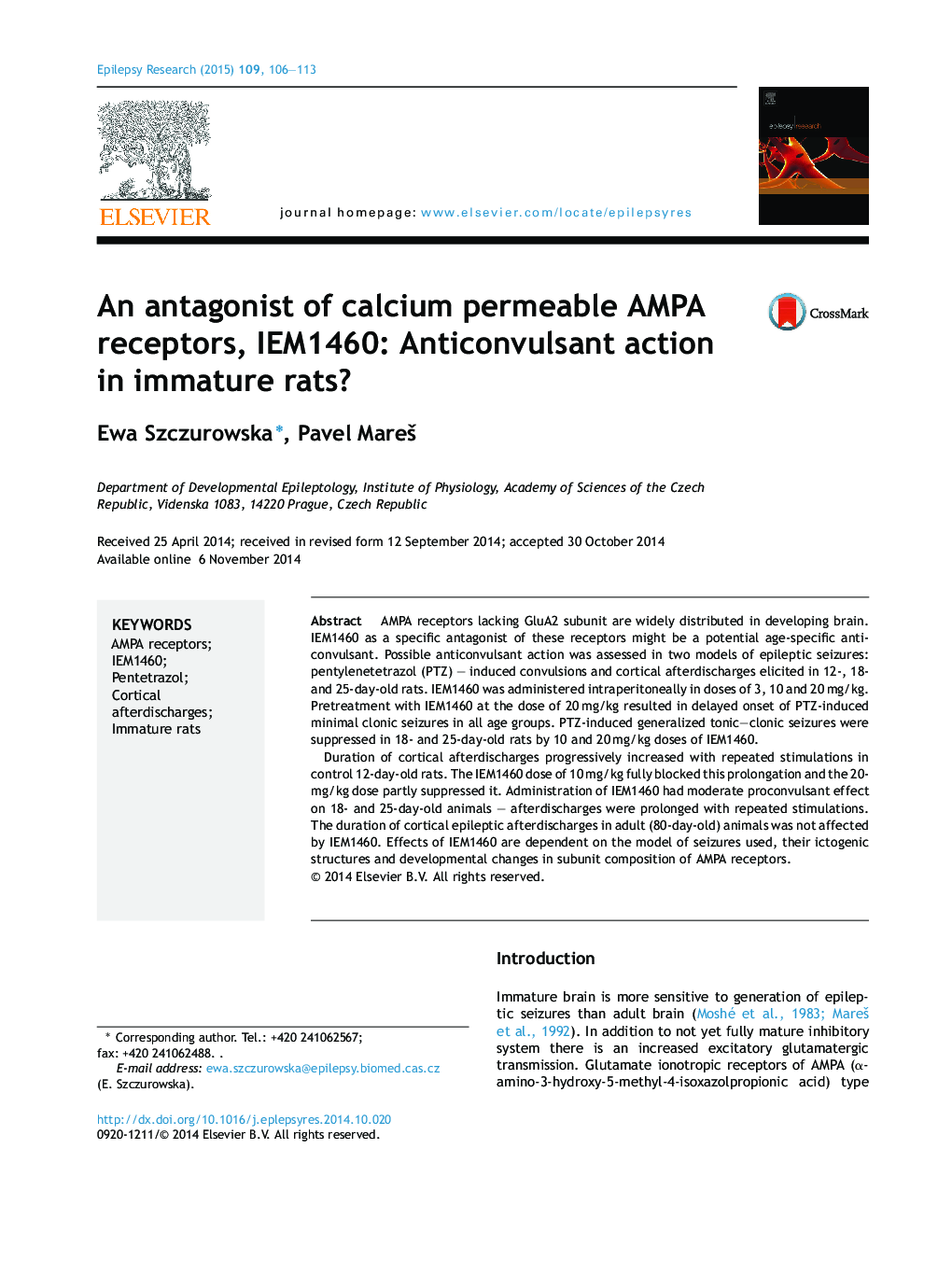| Article ID | Journal | Published Year | Pages | File Type |
|---|---|---|---|---|
| 6015636 | Epilepsy Research | 2015 | 8 Pages |
â¢Ca2+ permeable AMPA receptors may be a target for age-specific anticonvulsants.â¢Antagonist of these receptors IEM1460 may exhibit anticonvulsant action.â¢IEM1460 was tested in pentetrazol seizures and cortical epileptic afterdischarges.â¢Effects of IEM1460 varied during postnatal development in rats.â¢IEM1460 action depends on GluR2 subunit expression profile in ictogenic structures.
AMPA receptors lacking GluA2 subunit are widely distributed in developing brain. IEM1460 as a specific antagonist of these receptors might be a potential age-specific anticonvulsant. Possible anticonvulsant action was assessed in two models of epileptic seizures: pentylenetetrazol (PTZ) - induced convulsions and cortical afterdischarges elicited in 12-, 18- and 25-day-old rats. IEM1460 was administered intraperitoneally in doses of 3, 10 and 20Â mg/kg. Pretreatment with IEM1460 at the dose of 20Â mg/kg resulted in delayed onset of PTZ-induced minimal clonic seizures in all age groups. PTZ-induced generalized tonic-clonic seizures were suppressed in 18- and 25-day-old rats by 10 and 20Â mg/kg doses of IEM1460.Duration of cortical afterdischarges progressively increased with repeated stimulations in control 12-day-old rats. The IEM1460 dose of 10Â mg/kg fully blocked this prolongation and the 20-mg/kg dose partly suppressed it. Administration of IEM1460 had moderate proconvulsant effect on 18- and 25-day-old animals - afterdischarges were prolonged with repeated stimulations. The duration of cortical epileptic afterdischarges in adult (80-day-old) animals was not affected by IEM1460. Effects of IEM1460 are dependent on the model of seizures used, their ictogenic structures and developmental changes in subunit composition of AMPA receptors.
